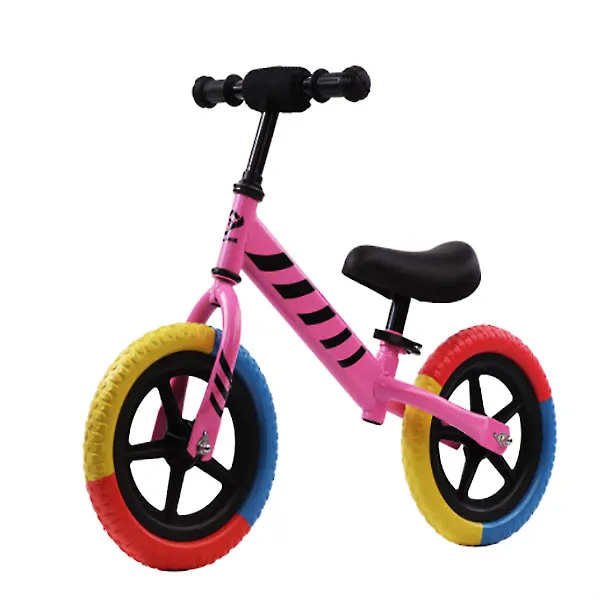10 月 . 05, 2024 15:26 Back to list
mountain bikes men
The Ultimate Guide to Mountain Bikes for Men
Mountain biking is more than just a sport; it’s a lifestyle that combines adventure, adrenaline, and a deep connection to nature. For men looking to dive into this exhilarating world or upgrade their current bike, understanding the essentials of mountain bikes is crucial. This guide will cover the key aspects of choosing the perfect mountain bike, including types, features, maintenance, and safety tips.
Types of Mountain Bikes
Mountain bikes come in various styles, each tailored for specific terrains and riding styles. Understanding these types is the first step in finding the right bike.
1. Cross-Country (XC) Bikes Designed for speed and efficient climbing, XC bikes are lightweight and perfect for longer rides on varied terrain. They often feature a hardtail (front suspension only) or full suspension, allowing for a balance of speed and control.
2. Trail Bikes A versatile option, trail bikes can handle a range of conditions, from rocky paths to downhill trails. They typically have moderate travel suspension (around 120-150mm) for agility and comfort.
3. All-Mountain Bikes These bikes are built for the thrill-seekers. With more suspension travel (150-180mm), all-mountain bikes are designed to tackle steep descents and rough terrain while still being effective for climbing.
4. Downhill (DH) Bikes Built exclusively for descending steep and technical trails, downhill bikes are robust with heavy-duty frames and long travel suspension (180mm or more). They are not designed for climbing and require shuttle services or lifts to reach the top of the trails.
5. Fat Bikes With oversized tires, fat bikes are perfect for riding on sand, snow, or other soft surfaces. Their stability and grip make them suitable for diverse conditions, providing a unique riding experience.
Key Features to Consider
When selecting a mountain bike, several features contribute to its performance and comfort
1. Frame Material Mountain bikes typically come with frames made from aluminum, carbon fiber, or steel. Aluminum is lightweight and affordable, carbon fiber offers excellent performance at a higher price, and steel, while heavier, provides durability and comfort.
2. Suspension Depending on the terrain, the choice between hardtail and full suspension is vital. Hardtails are lighter and easier to maintain but may lack comfort on rough trails. Full-suspension bikes provide better shock absorption and traction.
3. Wheel Size Mountain bikes generally have 26-inch, 27.5-inch, or 29-inch wheels. Larger wheels roll over obstacles more easily and offer better traction, making them ideal for rough terrain, while smaller wheels provide better maneuverability.
4. Brakes Disc brakes are the standard for mountain bikes, offering reliable stopping power in various conditions. Hydraulic disc brakes provide superior modulation and stopping power compared to mechanical options.
5. Gearing Look for bikes with a wide range of gears to tackle different terrains easily. A 1x drivetrain simplified shifting and reduces weight, making it popular among many mountain bikers.
mountain bikes men

Maintenance Tips
To ensure your mountain bike performs well and lasts long, regular maintenance is crucial
1. Clean Your Bike After each ride, wipe down the frame, wheels, and components. Use a bike-specific cleaner for the chain and drivetrain.
2. Check Tire Pressure Proper tire pressure is essential for comfort and performance. Refer to the manufacturer's recommendations based on your riding style and conditions.
3. Inspect Brakes Regularly check brake pads for wear and ensure that your braking system works effectively. Replace worn pads promptly to maintain safety.
4. Lubricate the Chain A well-lubricated chain function smoothly and prevents excessive wear.
5. Service Suspension Regularly check and service your suspension components as per the manufacturer’s recommendations for optimal performance.
Safety Tips for Mountain Biking
Mountain biking, while exciting, comes with risks. Prioritizing safety is essential
1. Wear Protective Gear Always wear a helmet, and consider additional gear such as gloves, knee pads, and elbow pads to protect against falls.
2. Ride Within Your Limits Understand your skill level and gradually tackle more challenging trails.
3. Stay Aware of Surroundings Be vigilant of other riders, hikers, and obstacles on the trail.
4. Take a First Aid Kit Always carry a basic first aid kit and know how to handle common injuries while biking.
Conclusion
Choosing the right mountain bike involves understanding the various types and features available, considering your riding style and the terrain you'll encounter. With proper maintenance and a focus on safety, mountain biking can be an incredibly rewarding adventure. Whether you're a seasoned pro or a novice, the thrill of navigating through nature on your mountain bike awaits. Happy trails!
-
The Main Application Scenarios of Mountain Bike
NewsOct.29,2024
-
Suggestions for Selecting and Maintaining Mountain Bike
NewsOct.29,2024
-
Characteristics of Kids Balance Bike
NewsOct.29,2024
-
Characteristics of Baby Stroller
NewsOct.29,2024
-
Characteristics and Advantages of Mountain Bike
NewsOct.29,2024
-
Baby Stroller Purchasing Suggestions
NewsOct.29,2024
-
Suggestions for Purchasing Kids Balance Bike
NewsOct.09,2024

